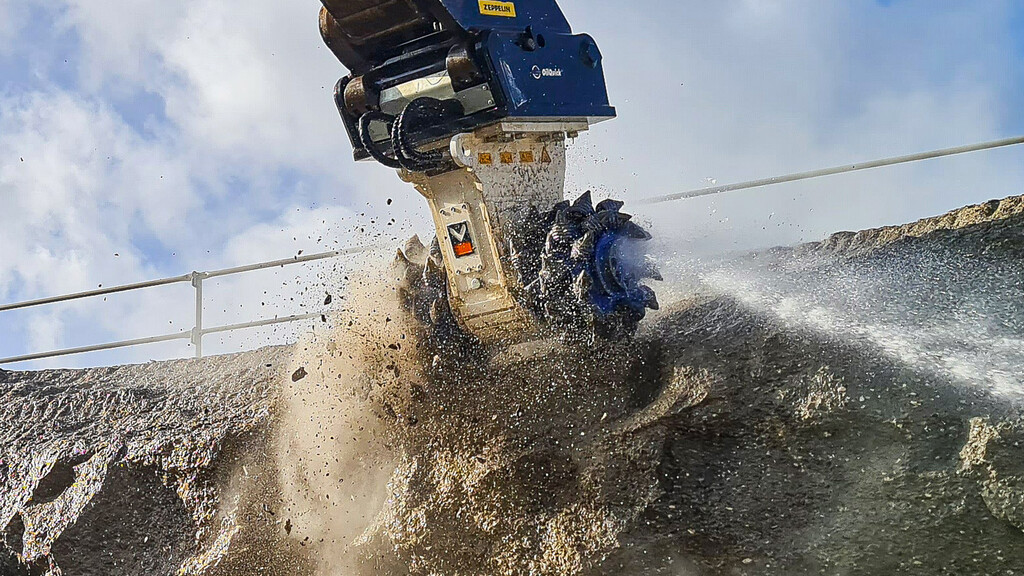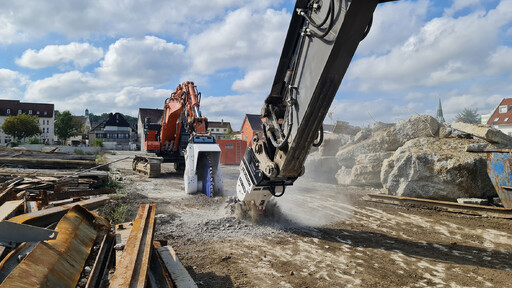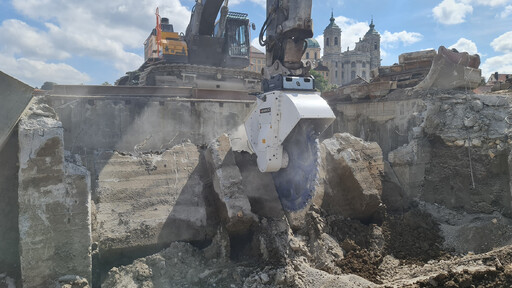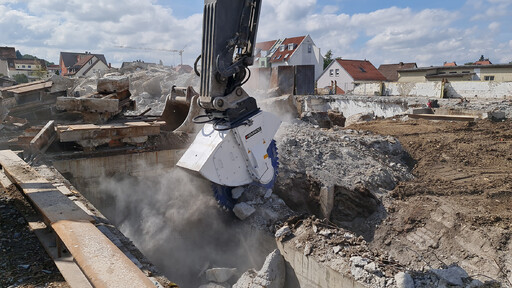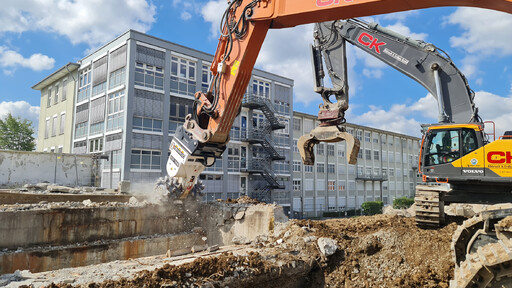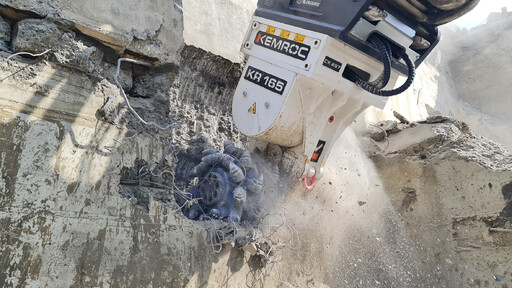CITY * DEMOLITION
Published: 23/3, 2023
Right in the heart of Weingarten, Germany, a new city quarter called “Martinshöfe” is being built. The 10-acre (4 hectare) site will include residential buildings with around 500 condominiums and rental apartments, green and open spaces, and a commercial area with restaurants and retail outlets. But before this building project could proceed, a former industrial complex had to be completely demolished followed by site preparation work.
In addition to the removal of more than 52,300 yd3 (40,000 m3) of concrete and reinforced concrete, demolition contractor CK Abbruch is also excavating nearly 157,000 yd3 (120,000 m3) of earth for the buildings.
Having demolished buildings above ground level, experts have been working on the removal of huge underground foundations left over from a former old forging company, with some elements reached nearly 1,692 yd3 (1,500 m3) in size. In some places, the concrete foundations contained a large number of heavy steel components, and had to be chiseled out or burned through and removed individually.
What’s more, CK Abbruch’s contract mandated that all work in the inner-city location had to be carried with the lowest noise and vibration levels possible.
Gentle milling and cutting
In view of these challenges, CK Abbruch decided to use a combined demolition and dismantling process. The machinery at the core of the process to be used at Weingarten consisted of two hydraulic excavators equipped with KEMROC attachments, a 45t machine with a DMW 220 cutter wheel and a KR 150 drum cutter, as well as a 60t machine with a DMW 220 HD cutter wheel and a KR 165 drum cutter.
“At peak times, we have five excavators with operating weights of up to 80t operating on this construction site, as well as a mobile crushing plant and a mobile screen for high-quality processing of the resulting concrete residue,” says CK Abbruch CEO Markus Christadler. “The drum cutters and cutter wheels, our excavator attachments, play a decisive role in achieving low-emission, environmentally friendly and economical demolition.”
The DMW range of cutter wheels from KEMROC achieve high performance in hard rock and reinforced concrete. CK Abbruch uses the cutter wheels to economically cut down large-volume structures into smaller individual pieces. These are then broken down into a size suitable for crushing using concrete cutters and shears.
“We can largely rule out the use of loud, high vibration equipment such as breakers in the steps prior to crushing,” Christadler says. “The narrow tool profiles of the cutter wheels also help to minimize the production of worthless fine-grained material as well as keeping fuel consumption and tool wear low.”
Similarly, KEMROC’s KR range of drum cutters are robustly built and ideal attachments for tunnelling applications as well as for low-vibration and low-noise demolition of reinforced concrete, making them a perfect complement to the KEMROC cutter wheels perfectly.
“We use the drum cutter attachments where, for certain reasons, we cannot use the cutter wheels,” Christadler says. “At many places, foundations on our site meet or cross the boundary with public and private land. At these points, we are not allowed to cross our boundary into existing structures, so we use drum cutters because, unlike the cutter wheels, for technical reasons we can work without crossing the boundary.”
Calculable parameters
By the end of November 2022, around 80 percent of the demolition work at the Martinshöfe project in Weingarten had been completed. Christadler was confident that this part of the project would be completed by the end of March 2023 and that the concurrent earthworks would continue. Consumable costs to date are also in line with what he has experienced with other projects in the past.
“Overall, with this equipment, we can calculate our costs accurately, we can complete the work in an environmentally friendly manner, on time and within budget,” Christadler says.

